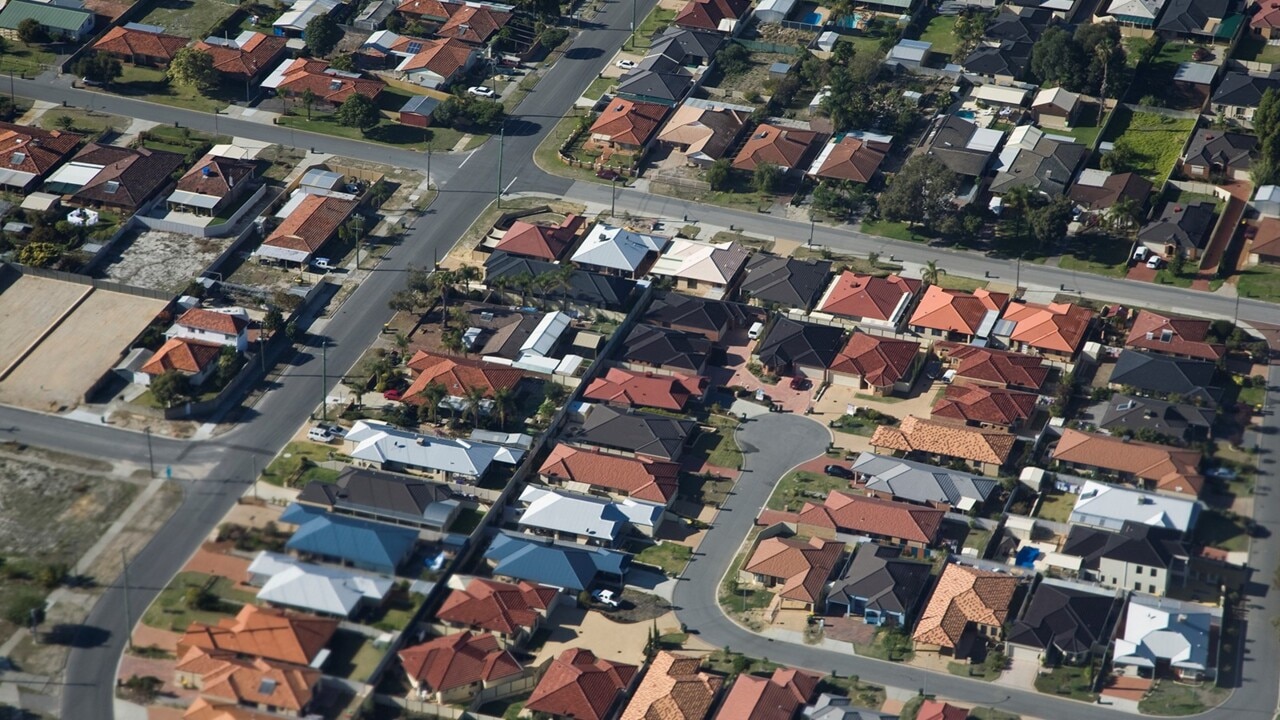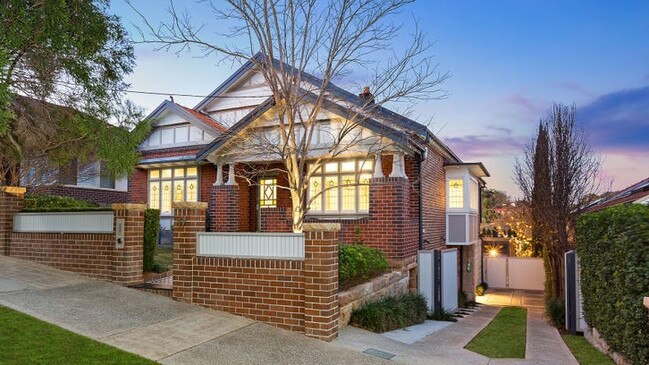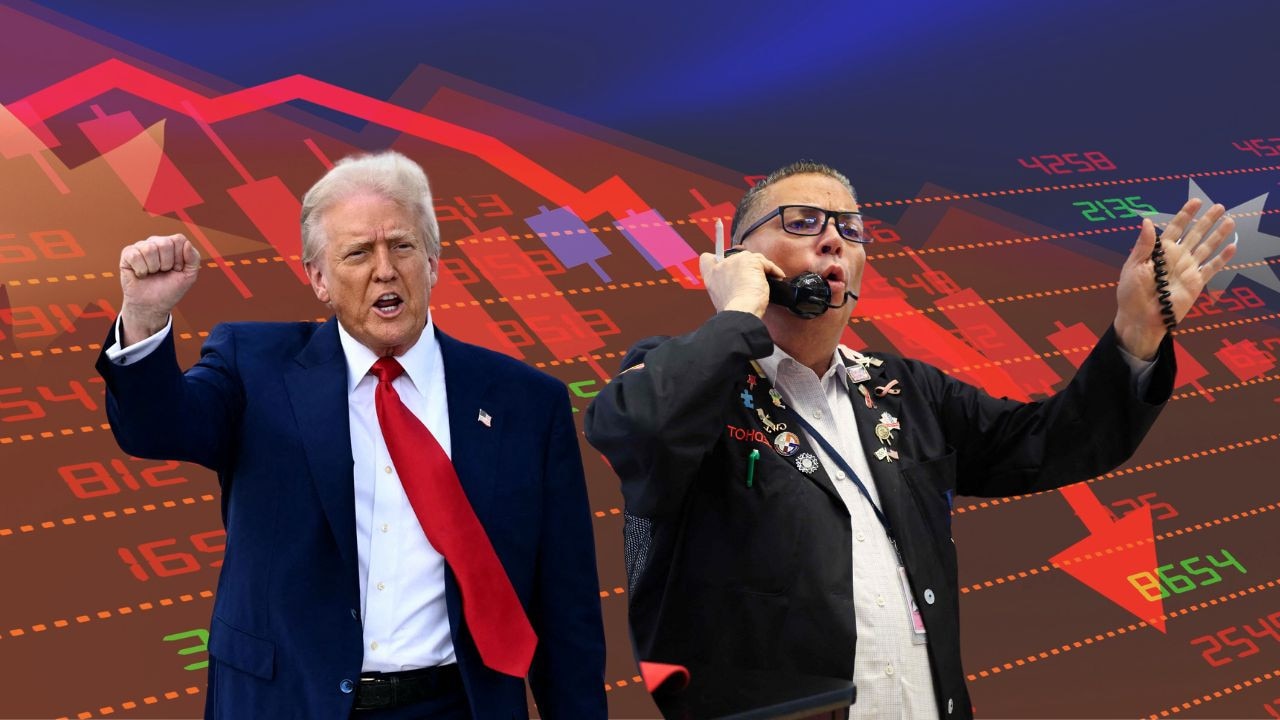Australia’s fixed interest rates cliff to crush property prices in 2023
The market’s seen a lot in 10 years, but nothing can prepare it for an unprecedented $478bn fixed rate mortgage ‘cliff’ around the corner.

Business
Don't miss out on the headlines from Business. Followed categories will be added to My News.
Mortgage stress caused by a reset of low fixed-rate home loans to interest rates about three times higher this year is set to magnify the impact of Australia’s fastest-ever increase in interest rates.
The value of Australia’s home loan market is around $2.1 trillion. About 35 per cent, or $735bn, of that total were fixed rate mortgages, as of early October, according to the Reserve Bank. And around 65 per cent, or $478bn of these fixed rate loans were due to expire by the end of 2023.
There are few historical precedents for the scale of this fixed rate mortgage cliff.
There was something similar in the explosion of the honeymoon lending rates in the US. That preceded the subprime and global financial crises of 2007 and 2008.
However, the US experience involved much lower-quality borrowers – and so isn’t really comparable.
Australia hasn’t seen anything like it before.
Fixed rate mortgages in Australia have historically been only about 15 per cent to 20 per cent of the total.
That was until the RBA lent $188bn of three-year fixed-rate loans to banks at rates of between 0.1 and 0.25 per cent during the Covid-19 pandemic and said it was “not expecting to increase the cash rate” from a record low of 0.1 per cent for “at least three years”.
Based on market pricing for the cash rate as of early October 2022 – and assuming a full pass-through to variable mortgage rates – most fixed-rate borrowers with loans expiring in 2023 face interest rate increases of 3–4 percentage points when they reset to variable rates, according to the RBA.
Market pricing for the terminal cash rate has risen about 35 basis points to 3.97 per cent since then.

Combined with the lagged impact on variable mortgage rates of the RBA’s decision to lift the cash rate to 3.1 per cent in December, and given the risk of a further increase in the cash rate in line with market pricing, the fixed rate cliff is likely to cause a “sharp rise in mortgage stress”, according to AMP Capital’s chief economist, Shane Oliver. He predicts the jump in mortgage rates will cause a further weakening in demand and a potential increase in supply as some financially-stressed homeowners are forced to sell.
While lots of factors affect home prices – including housing supply, immigration, household size, taxation, help from parents, home size and quality, and government incentives – a surge in house prices in recent decades has been closely linked to affordability, largely driven by falling interest rates. But affordability has plunged since the central bank started lifting rates in May.
The amount that an average new homebuyer with a 20 per cent deposit, average full-time earnings and mortgage payments assessed at 28 per cent of their income can afford to pay for a home has dived almost 27 per cent – from $600,000 at the peak in April, to $440,000 now.
A preceding surge in house prices and price-to-income ratios was driven by a massive fall in mortgage rates – from 17 per cent in 1989 to record lows of between 2 per cent and 3 per cent in 2021.
“This demand side impact has been the key driver of home price falls so far, but suggests there is much more to go,” Dr Oliver said. In terms of financial stress, with a 3.1 per cent cash rate, household interest payments as a share of income are already estimated to be at a decade high.
Given record debt levels, further increases in mortgage rates will start to push total mortgage payments – including principal and interest – to record highs, relative to household income.
“This is likely to result in a sharp rise in mortgage stress – particularly as fixed rate loans reset this year,” Dr Oliver said. As a result of the demand and supply of higher interest rates, he expects house prices to fall 15 to 20 from their peak last April to a potential trough in the September quarter.
It came as CoreLogic said Australia’s national average home price fell 1.1 per cent in December.
The national average fell 8 per cent since April and 5.3 per cent in 2022. It was the worst calendar year for house prices since the Global Financial Crisis in 2008.
Capital city prices have fared worse, falling 8.6 per cent since April and 6.9 per cent in 2022.
It was the worst calendar year for capital city house prices since records began in 1980.
While predicting a further 9 per cent fall in national average house prices up to September, AMP’s Dr Oliver saw a chance of interest rate cuts later this year.

In his view that could see house prices trim the expected 2023 fall to around 7 per cent. “The main risks on the downside are that the RBA raises the cash rate to around 4 per cent as the money market is assuming, and the economy enters recession,” Dr Oliver said.
RBA has already increased the cash rate by as much as the 3 per cent debt serviceability buffer that has applied since November 2021.
“In this scenario home prices could fall by around 30 per cent from their high,” Oliver said.
On the upside, said several factors will help put a floor under prices and drive a recovery. These include government support programs, a tight rental market and rapidly rising immigration.
But for now, the market will be dominated by higher rates.
Moreover, a pause in rate hikes by the RBA on its own is unlikely to be enough to drive an upswing in prices as the capacity of buyers to pay will still be depressed, according to Dr Oliver.
The last two major upswings in property prices, which started in 2012 and 2019 respectively, didn’t start until the RBA cut interest rates. AMP doesn’t expect rate cuts until late 2023 or early 2024.
The RBA has said that if interest rates rise by a cumulative 3.5 percentage points from the beginning of the current tightening cycle to the end of 2023, almost 60 per cent of borrowers with fixed-rate loans would face an increase in their minimum payments of at least 40 per cent when they expire. But just over one-third of fixed-rate borrowers will not experience any increases in their minimum payments by the end of 2023, as they have loans that are due to expire in 2024 and beyond.
And the RBA added that there’s “only limited information” available to assess whether fixed-rate borrowers will experience difficulty with these increased minimum payments.
It said these borrowers tend to accumulate savings outside their mortgages, as contractual limitations restrict their ability to save via offset and redraw facilities.
“Given very low interest rates and the broadbased increase in household saving over recent years, many fixed-rate borrowers are likely to have accumulated liquidity buffers during the fixed loan term particularly as many will have demonstrated a capacity to service higher interest rates prior to refinancing at lower fixed rates,” the RBA said. “However, some will be vulnerable.”
Originally published as Australia’s fixed interest rates cliff to crush property prices in 2023



